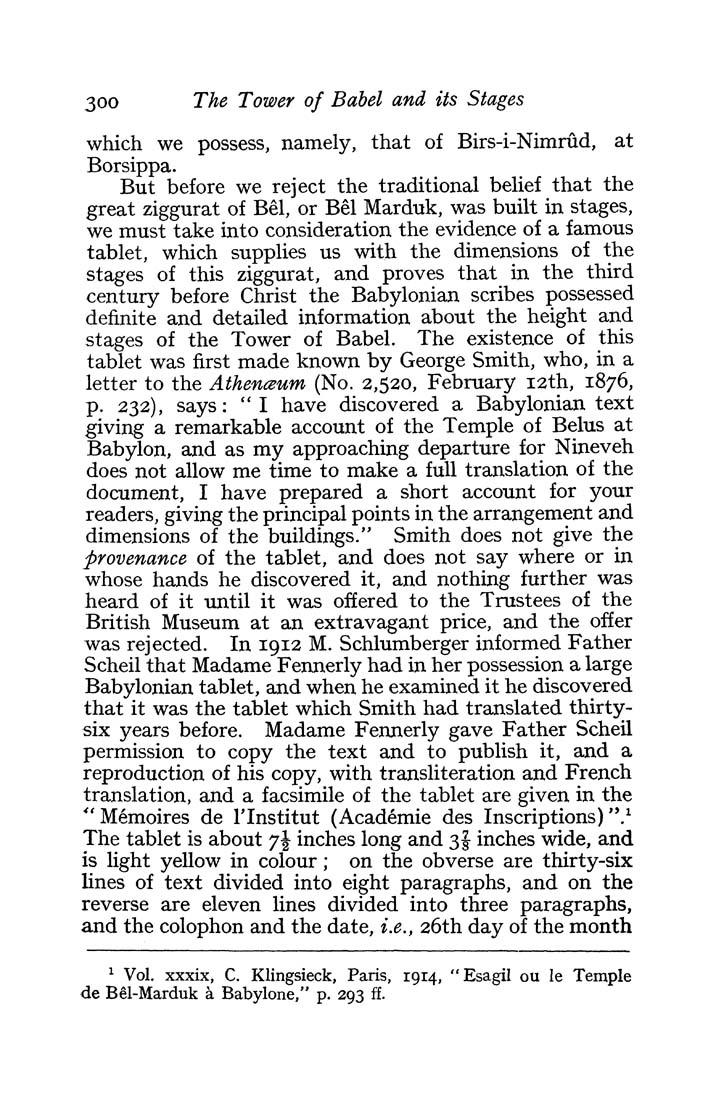300 The Tower of Babel and its Stages
which we possess, namely, that of Birs-i-Nimrud, at
Borsippa.
But before we reject the traditional belief that the
great ziggurat of Bel, or Bel Marduk, was built in stages,
we must take into consideration the evidence of a famous
tablet, which supplies us with the dimensions of the
stages of this ziggurat, and proves that in the third
century before Christ the Babylonian scribes possessed
definite and detailed information about the height and
stages of the Tower of Babel. The existence of this
tablet was first made known by George Smith, who, in a
letter to the Athenceum (No. 2,520, February 12th, 1876,
p. 232), says: ''I have discovered a Babylonian text
giving a remarkable account of the Temple of Belus at
Babylon, and as my approaching departure for Nineveh
does not allow me time to make a full translation of the
document, I have prepared a short account for your
readers, giving the principal points in the arrangement and
dimensions of the buildings." Smith does not give the
provenance of the tablet, and does not say where or in
whose hands he discovered it, and nothing further was
heard of it until it was offered to the Trustees of the
British Museum at an extravagant price, and the offer
was rejected. In 1912 M. Schlumberger informed Father
Scheil that Madame Fennerly had in her possession a large
Babylonian tablet, and when he examined it he discovered
that it was the tablet which Smith had translated thirty-
six years before. Madame Fennerly gave Father Scheil
permission to copy the text and to publish it, and a
reproduction of his copy, with transliteration and French
translation, and a facsimile of the tablet are given in the
^'Memoires de I'lnstitut (Academic des Inscriptions)'*.^
The tablet is about 7I inches long and 3I inches wide, and
is light yellow in colour; on the obverse are thirty-six
lines of text divided into eight paragraphs, and on the
reverse are eleven lines divided into three paragraphs,
and the colophon and the date, i.e., 26th day of the month
^ Vol. xxxix, C. Klingsieck, Paris, I9r4, "Esagil ou le Temple
de Bel-Marduk a Babylone," p. 293 ff.
|








